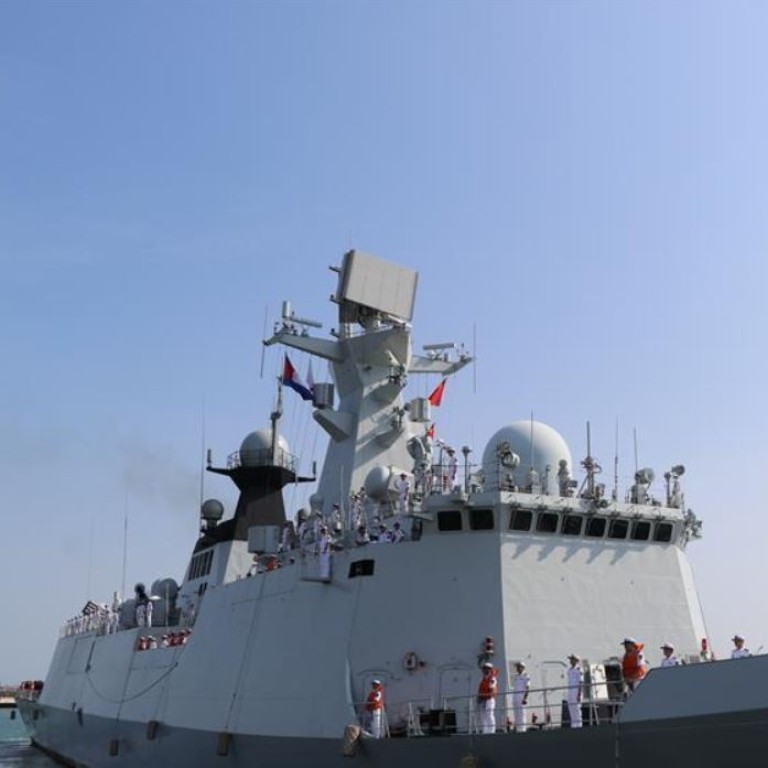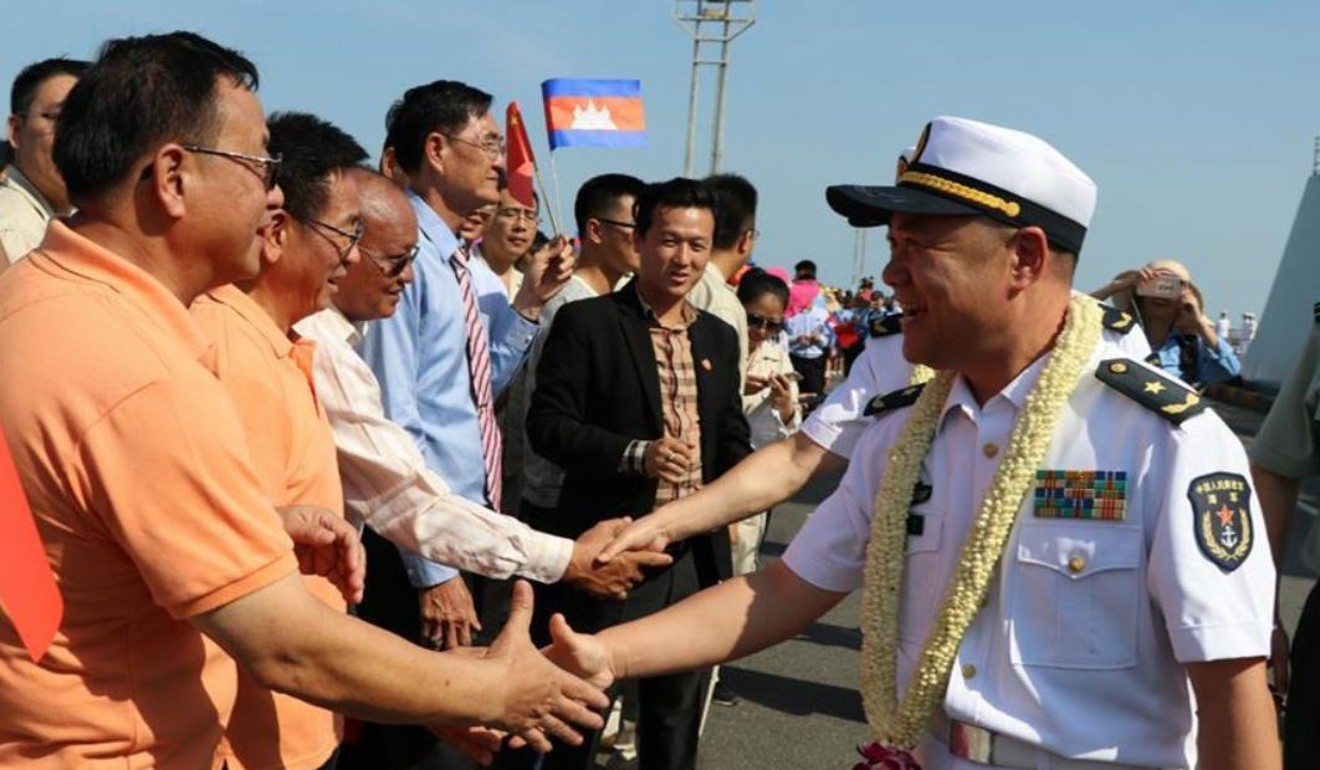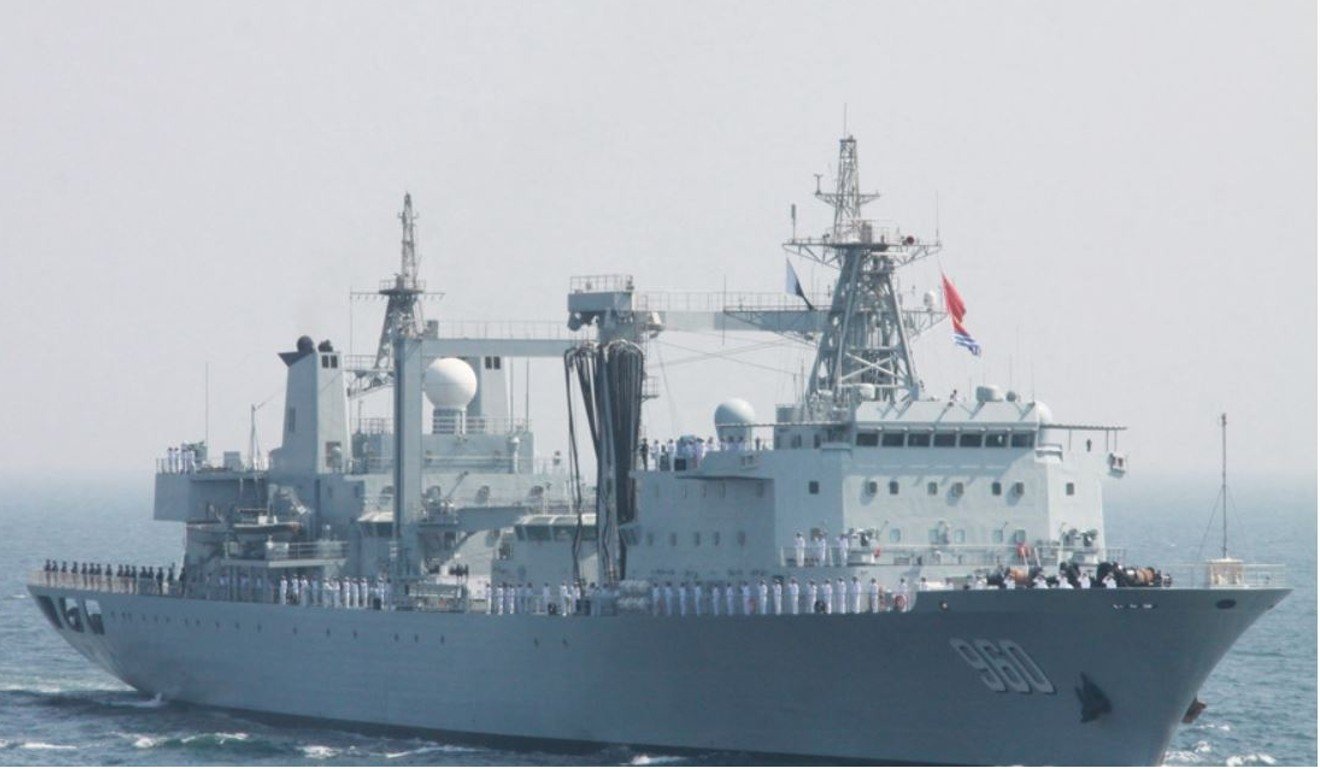
Base instinct: how Chinese visit to Cambodia reignited rumour of navy port plan
- Docking of warships revived speculation about implications of close military ties and whether Beijing wants to strengthen its hand in disputed waters
Fresh from celebrating four decades since the downfall of the former Khmer Rouge rulers, Cambodia welcomed several Chinese warships. Just days after last week’s anniversary, the vessels docked in the resort city of Sihanoukville, reviving concerns about the implications of close military ties between the two countries and the possibility China is planning a naval base in the kingdom.
Cambodia’s leader Hun Sen swatted away similar rumours about Beijing’s intentions last November, after receiving a letter from US Vice-President Mike Pence.

“The constitution of Cambodia bans the presence of foreign troops or military bases in its territory … whether naval forces, infantry forces or air forces,” the premier said, bluntly dismissing Washington’s concerns.
But after the navy visit, analysts said there may be some substance to the idea.
Paul Chambers, a regional analyst at Thailand’s Naresuan University, insisted: “Reliable, senior Cambodian officials have told me that the Hun Sen regime is moving toward the tacit approval of a naval base on a 99-year land concession in Koh Kong,” Chambers said in an email, referring to the coastal province where a Chinese developer is building a US$3.8 billion tourism project on 45,000 hectares of land.
Beijing could also offer to build a port for trade, rather than a formal naval base, according to Bates Gill of Sydney’s Macquarie University.
“[It] would primarily have a commercial purpose but which could be fitted to accommodate Chinese naval vessels. It seems unlikely that would be a permanent base for the Chinese navy,” said the professor of Asia-Pacific security and Chinese foreign policy.

China’s state news agency Xinhua said the three ships that docked on Wednesday were on a “friendly” visit and were from the 30th Chinese naval escorting fleet, which is led by Rear Admiral Xu Haihua.
The fleet is made up of missile frigates Wuhu and Handan and supply ship Dongpinghu.
Cambodian media said the Chinese delegation – made up 695 sailors – would perform joint military exercises, and meet military commander and defence minister Tea Banh.
The delegation would also visit a Chinese school in Sihanoukville and the public would be allowed to tour two of the ships, according to the Cambodia China Times website.
Foreign ships docking in Cambodia isn’t new. Russian, Indian and American ships have made similar visits, but Cambodia’s defence relationship with China has come under scrutiny because of its exclusivity.
In 2017, Cambodia abruptly cancelled annual drills with the US and Australian militaries. In their place, the kingdom’s forces joined new “Golden Dragon” exercises with China.
Beijing is the main donor to Cambodia’s military, which is generally seen as outdated and weak compared with those from neighbours Vietnam and Thailand. Last June, China unveiled a US$100 million military grant to upgrade Cambodia’s bases and weapons.
As the countries’ ties tighten, China and members of Asean are negotiating terms for a new code of conduct in the South China Sea.
China has overlapping claims with Vietnam, the Philippines, Malaysia and other countries but Cambodia is not one of them.
Gill said the navy visit would remind the region “that any agreement reached between China and Asean in relation to the South China Sea will need to have Cambodia’s assent, and that assent will be heavily influenced by Beijing”.
In earlier discussions, Cambodia blocked Asean from issuing joint statements that condemned China’s claims to disputed islands in the South China Sea.
“Since Cambodia has no claim in that conflict, it matters not to Hun Sen that Cambodia prioritise China’s interests over those of Asean,” said Chambers. “The result will be a failure of Asean to cohere on any issues relating to China.”
Regional security analyst Carl Thayer said the current draft of the code of conduct suggested China would “essentially have a veto on outside military exercises for any country in Southeast Asia”.
Beijing has proposed several terms such as joint military exercises and “mutual port calls … on a regular basis” with Asean countries, Thayer said, and wants no member to hold joint military exercises with outside countries without approval.
Chambers said closer military ties between Beijing and Phnom Penh could also affect current or future territorial disputes involving Cambodia. One example might be the long-standing row with Thailand over the 11th century Preah Vihear temple.
It is something that Thailand should be concerned about because with China building up Cambodia’s military and Thai-Cambodian border relations still rather tense, China could build Cambodia up to be a military irritant of Bangkok,” Chambers said, explaining that China could also back Cambodia in territorial disagreements.
